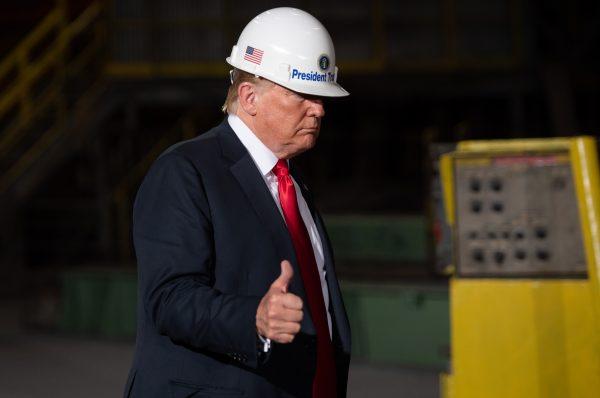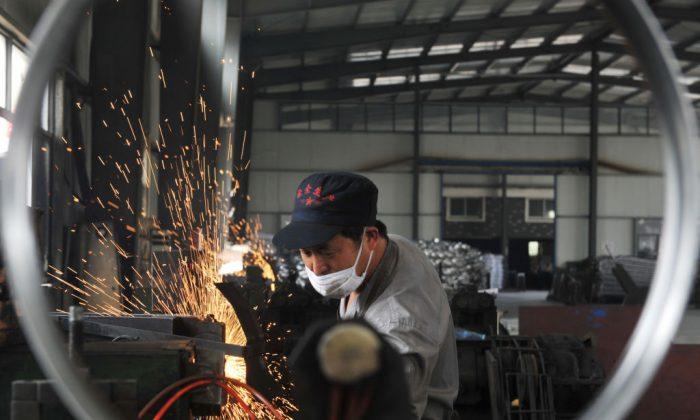China announced it would reduce tariffs on textile products and metals, including steel, as it runs low on ammunition in its tariff war with the United States.
Tariffs on textile and metals will be lowered to 8.4 percent from 11.5 percent, starting Nov. 1, China’s Finance Ministry stated on Sept. 30.
The United States, on the other hand, imported more than $505 billion worth of goods from China in 2017.
Trump resorted to tariffs in response to China’s unfair trade practices, including theft, the forced transfer of intellectual property, dumping, and other violations of World Trade Organization rules.

Trump has repeatedly said he doesn’t want a trade war, but indicated that he needs to apply pressure to achieve a level playing field for American businesses. The president has been rolling out a fundamental overhaul of U.S. trade policies, seeking more balanced relationships with many major foreign trading partners.
China’s tariff reductions represent cracks in the initially tough stance the communist regime had taken in its rhetoric against Trump’s pressure. The regime had already reduced import tariffs in July on some consumer items including apparel, cosmetics, home appliances, and fitness products.
Also slashed were import tariffs on wood and paper products, minerals, and gemstones—to 5.4 percent from 6.6 percent, the ministry said in a statement.
Average import tariffs on over 1,500 products will fall to 7.8 percent from 10.5 percent, the ministry said.
“Reducing tariffs is conducive to promoting the balanced development of foreign trade and promoting a higher level of opening up to the outside world,” the ministry stated.
China’s cabinet has announced plans to cut tariffs on machinery, electrical equipment, and textile products beginning on Nov. 1.
Influence Campaign
Chinese export hubs have been hit hard by Trump’s tariffs. The Chinese regime has ramped up its efforts on everything short of open armed conflict to fight the tariffs, according to cybersecurity expert Casey Fleming, who is chief executive of Black Ops Partners.“They do not want me, or us, to win because I am the first president ever to challenge China on trade,” Trump said during his address at the U.N. Security Council meeting Sept. 26. “And we are winning on trade. We are winning at every level. We don’t want them to meddle or interfere in our upcoming election.”
Iowa’s top newspaper recently published a four-page editorial insert by China Daily. The insert was filled with critiques of Trump’s tariffs, an apparent attempt to influence a state that exports large amounts of soy and pork to China. The insert didn’t mention that China Daily is run by the Chinese regime.
China tried to punish American farmers with a 25 percent import tariff on soy, which is a threat to Iowa, the second-largest soy producer in the United States.
In 2017, China consumed more than 110 million tons of soybeans, of which it imported 95.53 million tons, or 87 percent of its total consumption.






Friends Read Free